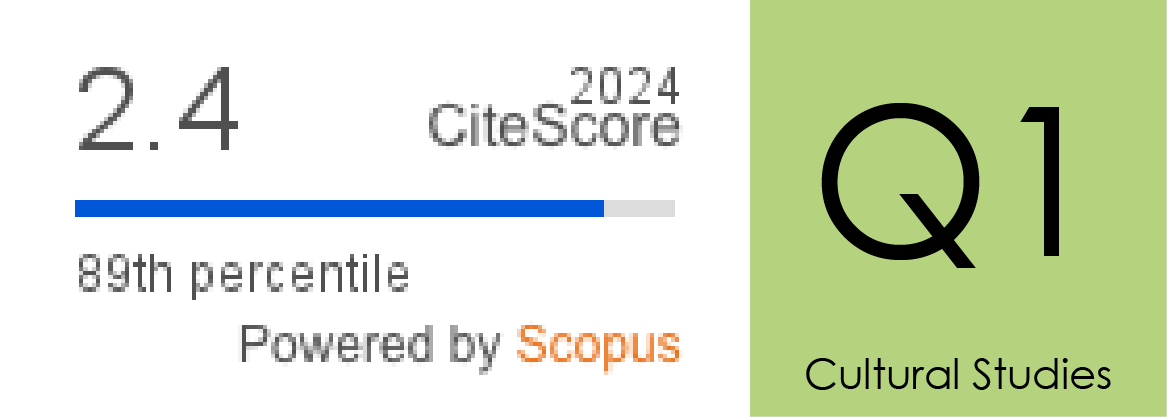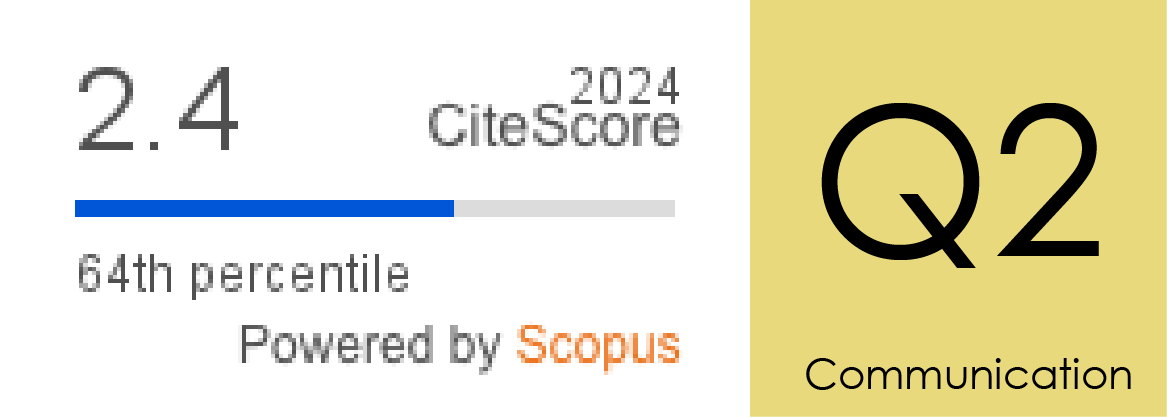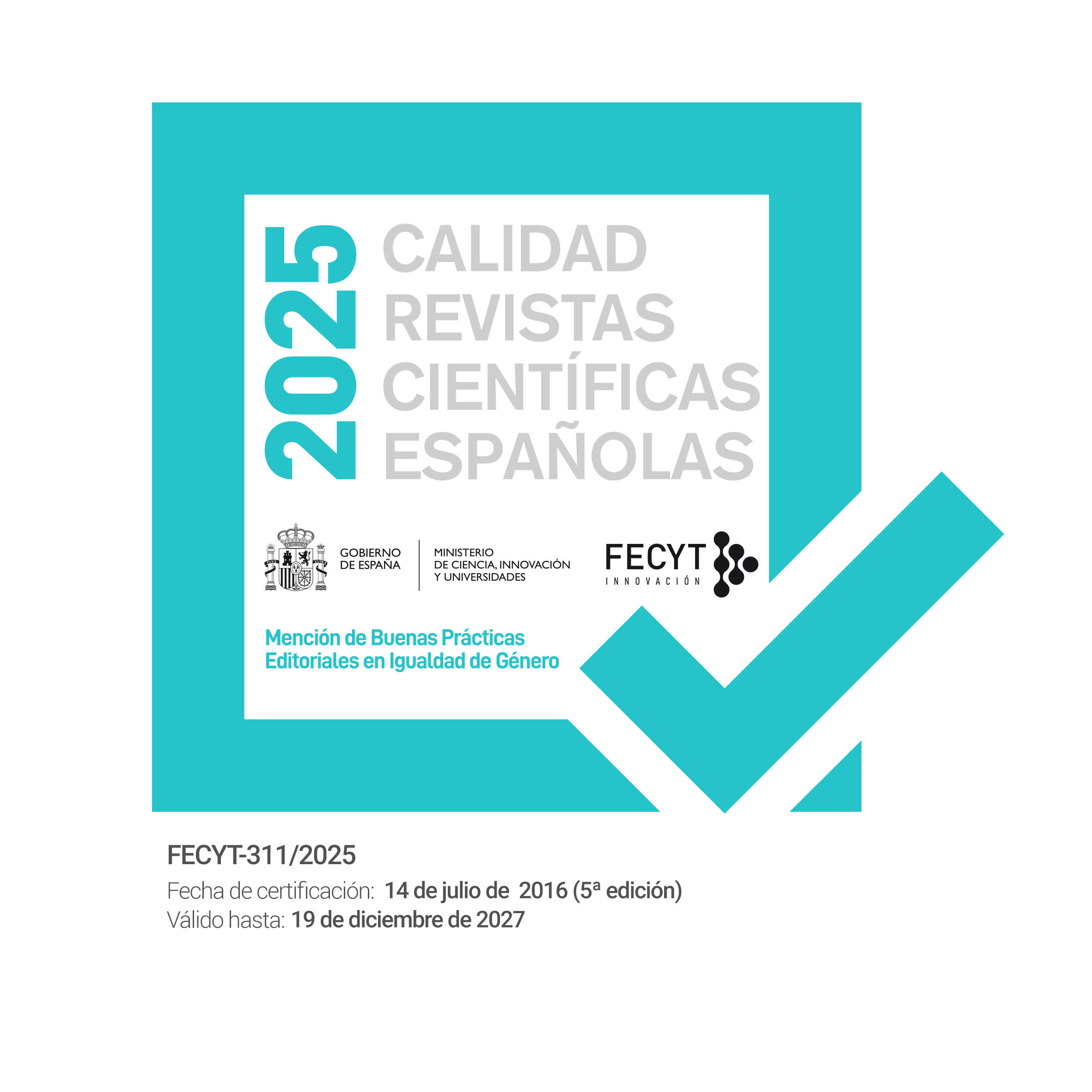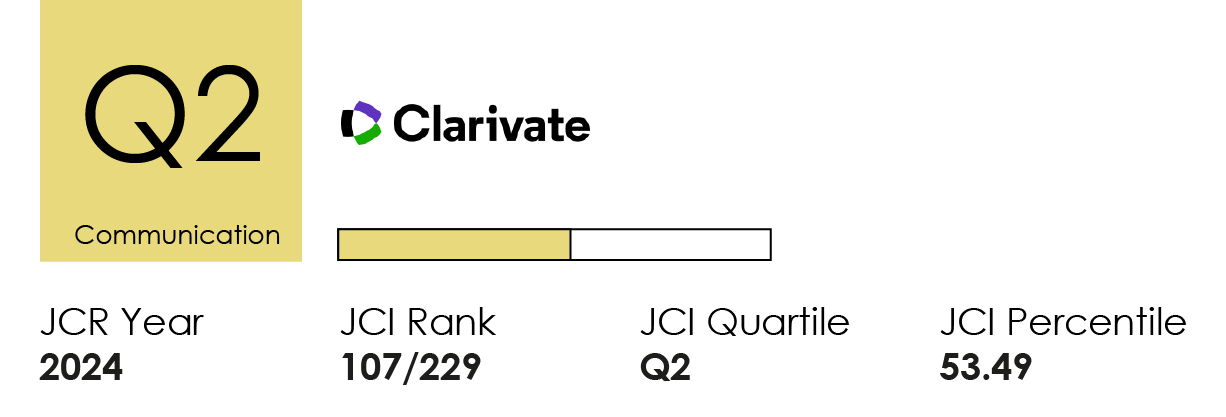El engagement de los influencers literarios con sus seguidores en Instagram: contenido y estrategia de los Bookstagrammers
DOI:
https://doi.org/10.14198/MEDCOM.24251Palabras clave:
Bookstagrammer, social networks, books, influencer, Instagram, communication.Resumen
El marketing de influencia se ha convertido en una herramienta efectiva para que las marcas conecten con sus consumidores en las redes sociales a través de los influenciadores. Aunque esta forma de marketing ha generado en los últimos años un mayor interés en la comunidad científica, se sabe relativamente poco sobre el contenido y la estrategia de los influencers y los vínculos con los comportamientos que generan en sus seguidores. En este contexto digital, cabe destacar un tipo de influencer relacionado con la literatura: los bookstagrammer. Usuarios que comparten su pasión por los libros, reseñan noticias de editoriales y fomentan el hábito de la lectura. Este estudio analiza cómo la estrategia de contenido y engagement de los bookstagrammers (medida por el número de seguidores, volumen de contenido y publicaciones de interés) se asocia con el engagement de los seguidores de estos influencers culturales en Instagram, tanto de forma independiente como interactiva. El estudio analiza un conjunto de datos recopilados de booskstagrammers analizando el contenido generado por estos influencers para probar las hipótesis propuestas. Los hallazgos muestran que las publicaciones que incluyen fotografías del autor o portadas de libros se asocian positivamente con la participación de los seguidores en las cuentas de Instagram, mientras que las publicaciones emocionales que expresan sentimientos se asocian negativamente con la participación de los seguidores. Estos hallazgos demuestran que los elementos analizados y la estrategia de contenido de los influencers literarios contribuyen al compromiso de los seguidores en Instagram.
Financiación
This article is part of the project “Redes Sociales y Emprendimiento" (B02.0402-P1) financed by the Cátedra de Creación de Empresas y Empresa Familiar UAO CEU (2020-2023)Citas
Ackerman, R., & Goldsmith, M. (2011). Metacognitive regulation of text learning: on screen versus on paper. Journal of experimental psychology: Applied, 17(1), 18.
Agarwal, S., & Mehta, S. (2018). Social influence maximization using genetic algorithm with dynamic probabilities. In 2018 Eleventh International Conference on Contemporary Computing (IC3), 1-6. IEEE.
Arora, A., Bansal, S., Kandpal, C., Aswani, R., & Dwivedi, Y. (2019). Measuring social media influencer index-insights from Facebook, Twitter and Instagram. Journal of retailing and consumer services, 49, 86-101.
Bakhshi, S., Shamma, D. A., & Gilbert, E. (2014). Faces engage us: Photos with faces attract more likes and comments on instagram. In Proceedings of the SIGCHI conference on human factors in computing systems, 965-974.
Boy, J. D., & Uitermark, J. (2016). How to study the city on Instagram. PloS one, 11(6), e0158161.
Brodie, R. J., Ilic, A., Juric, B., & Hollebeek, L. (2013). Consumer engagement in a virtual brand community: An exploratory analysis. Journal of business research, 66(1), 105-114.
Brown, T. E. (Ed.). (2003). Trastornos por déficit de atención y comorbilidades en niños, adolescentes y adultos. Elsevier España.
Camacho, J. G., & Alonso, A. J. (2010). La baja interacción del espectador de vídeos en Internet: caso Youtube España. Revista Latina de Comunicación Social, 65, 421-435.
Carbajo, S. (2014). BookTubers o la pasión por los libros. En Toyoutome [Blog]. Retrieved December 2021, from http://toyoutome.es/blog/booktubers-o-la-pasion-por-loslibros/26718.
Casany, M. J., Alier, M., Mayol, E., Piguillem, J., Galanis, N., García-Peñalvo, F. J., & Conde, M. Á. (2012). Moodbile: A framework to integrate m-learning applications with the LMS. Journal of Research and Practice in Information Technology, 44(2), 129-149.
Cavallo, G., & Chartier, R. (1998). Historia de la lectura en el mundo occidental, 15-66. Taurus Pensamiento.
Childers, C. C., Lemon, L. L., & Hoy, M. G. (2019). # Sponsored# Ad: Agency perspective on influencer marketing campaigns. Journal of Current Issues & Research in Advertising, 40(3), 258-274.
Collado, J. R. (2016). El booktrailer y el booktuber como estribillos transmedia de sagas fantásticas. In Sagas, distopías y transmedia: ensayos sobre ficción fantástica (pp. 59-74). Universidad de León.
Çukul, D. (2015). Fashion Marketing in Social Media: Using Instagram for Fashion Branding (No. 2304324). International Institute of Social and Economic Sciences.
Darma, I. G. S. B., Nurtiara, S. F., Amanda, R., Nindyana, R., & Meisandy, M. N. R. (2021). Bookstagram Community’s Book Review: A Reciprocal Ethnography Study. JELLE: Journal Of English Literature, Linguistics, and Education, 2(1).
De Veirman, M., Cauberghe, V., & Hudders, L. (2017). Marketing through Instagram influencers: the impact of number of followers and product divergence on brand attitude. International journal of advertising, 36(5), 798-828.
De Vries, L., Peluso, A. M., Romani, S., Leeflang, P. S., & Marcati, A. (2017). Explaining consumer brand-related activities on social media: An investigation of the different roles of self-expression and socializing motivations. Computers in Human Behavior, 75, 272-282.
Dezuanni, M., Reddan, B., Rutherford, L., & Schoonens, A. (2022). Selfies and shelfies on# bookstagram and# booktok–social media and the mediation of Australian teen reading. Learning, Media and Technology, 1-18.
Easterby-Smith, M., Thorpe, R., & Jackson, P. R. (2015). Designing management and business research. Management and business research, 66-106.
Enke, N. & Borchers, N. S. (2019) Social Media Influencers in Strategic Communication: A Conceptual Framework for Strategic Social Media Influencer Communication, International Journal of Strategic Communication, 13:4, 261-277, DOI: 10.1080/1553118X.2019.1620234
Gee, J. (2012). Nurturing affinity spaces and game-based learning. In Constance S., Kurt, S., & Sasha, B. (Eds.), Games, learning and society: learning and meaning in the digital age, 129-155. Cambridge University Press.
Giuria Farias, C. (2021). El impacto de las redes sociales en la promoción de lectura y venta de libros en Latinoamérica entre 2010-2020. Lengua Y Sociedad, 20(1), 71-82. Retrieved May 2022, from http://revista.letras.unmsm.edu.pe/index.php/ls/article/view/2203.
Goor, M. (2012). Instagram: A content analysis into marketing on Instagram. Master’s Thesis. University of Amsterdam, Department of Communications.
Guo, J., & Chen, H.-T. (2022). How Does Multi-Platform Social Media Use Lead to Biased News Engagement? Examining the Role of Counter-Attitudinal Incidental Exposure, Cognitive Elaboration, and Network.
IAB (2022). Estudio de redes sociales. 2022. Retrieved May 2022, from: https://iabspain.es/ estudio/estudio-de-redes-sociales-2022/.
Instagram (2023). En_bookle. Retrieved May 2022, from https://www.instagram.com/en_bookle/
Jacobson, J., Gruzd, A., & Hernández-García, Á. (2020). Social media marketing: Who is watching the watchers? Journal of Retailing and Consumer Services, 53, 101774.
Jeffman, T. M. W. (2017). Booktubers: performances e conversações em torno do livro e da leitura na comunidade booktube.
Jiménez-Castillo, D., & Sánchez-Fernández, R. (2019). The role of digital influencers in brand recommendation: Examining their impact on engagement, expected value and purchase intention. International Journal of Information Management, 49, 366-376.
Kaplan, A. M., & Haenlein, M. (2010). Users of the world, unite! The challenges and opportunities of Social Media. Business horizons, 53(1), 59-68.
Kelman, H. C. (2006). Interests, relationships, identities: Three central issues for individuals and groups in negotiating their social environment. Annual Review of Psychology, 57(1), 1–26.
Kelman, H. C. (1961). Processes of opinion change. The Public Opinion Quarterly, 25(1), 57–78.
Ki, C. W. C., Cuevas, L. M., Chong, S. M., & Lim, H. (2020). Influencer marketing: Social media influencers as human brands attaching to followers and yielding positive marketing results by fulfilling needs. Journal of Retailing and Consumer Services, 55, 102133.
Kietzmann, J. H., Hermkens, K., McCarthy, I. P., & Silvestre, B. S. (2011). Social media? Get serious! Understanding the functional building blocks of social media. Business horizons, 54(3), 241-251.
Kretzschmar, F., Pleimling, D., Hosemann, J., Füssel, S., Bornkessel-Schlesewsky, I., & Schlesewsky, M. (2013). Subjective impressions do not mirror online reading effort: Concurrent EEG-eyetracking evidence from the reading of books and digital media. PloS one, 8(2), e56178.
Krippendorff, K. (2004). Reliability in content analysis: Some common misconceptions and recommendations. Human communication research, 30(3), 411-433.
Kunin, J. (2008). Ciberculturas juveniles: los jóvenes, sus prácticas y sus representaciones en la era de Internet. Revista argentina de sociología, 6(11), 297-300.
Ladhari, R., Massa, E., & Skandrani, H. (2020). YouTube vloggers’ popularity and influence: The roles of homophily, emotional attachment, and expertise. Journal of Retailing and Consumer Services, 54, 102027.
Larazon.es (2021). Las mejores cuentas de Instagram para amantes de la lectura que son pura inspiración, retrieved March 2022, from https://www.larazon.es/lifestyle/20210423/ jzbu5jsldreifo67pi67rcqwcu.html.
Lindell, A. K. (2019). Left cheek poses garner more likes: The effect of pose orientation on Instagram engagement. Laterality: Asymmetries of Body, Brain and Cognition, 24(5), 600-613.
Lou, C., Tan, S. S., & Chen, X. (2019). Investigating consumer engagement with influencer-vs. brand-promoted ads: The roles of source and disclosure. Journal of Interactive Advertising, 19(3), 169-186.
Lou, C., & Yuan, S. (2019). Influencer marketing: how message value and credibility affect consumer trust of branded content on social media. Journal of Interactive Advertising, 19(1), 58-73.
Lluch Crespo, G. (2014). Jóvenes y adolescentes hablan de lectura en la red. Ocnos Revista de Estudios sobre lectura, 11, 7-20.
Mara, A. & Sorensen, K. (2013). Booktubers as a Networked knowledge community.
Margolin, S. J., Driscoll, C., Toland, M. J., & Kegler, J. L. (2013). E-readers, computer screens, or paper: does reading comprehension change across media platforms? Applied Cognitive Psychology, 27(4), 512–519.
Marquina, J. (2016). Los 10 booktubers españoles con mayor número de seguidores. Retrieved May 2022, from https://www.julianmarquina.es/los-10-booktubers-espanoles-con-mayor-numero-de-seguidores/
Martínez-Ezquerro, A. (2020). Lecturas para la diversidad: competencias y variables de uso en los futuros maestros. Ocnos. Revista de estudios sobre lectura, 19(3).
Martínez-Sanz, R., Buitrago, Á., & Martín-García, A. (2023). Comunicación para la salud a través de TikTok. Estudio de influencers de temática farmacéutica y conexión con su audiencia. Revista Mediterránea de Comunicación.
Monteblanco, L. (2015). Comunidades en red en la Sociedad de la Información: informan, comunican, conectan. El fenómeno Booktube. Informatio. Revista del Instituto de Información de la Facultad de Información y Comunicación, 20(1), 49-63.
Papacharissi, Z. (2002). The virtual sphere: The internet as a public sphere. New Media & Society, 4(1), 9–27.
Pastor, M. (2020). Los booktubers: El elemento clave para convertir al Perú en un país de lectores. RPP Noticias.
Piper, A. (2012). Book Was There: Reading in Electronic Times Chicago: University of Chicago Press
Ravettino, A. J. (2015). Booktubers y performances virtuales: modos contemporáneos de difundir y compartir literatura juvenil en la Red.
Rietveld, R., Van Dolen, W., Mazloom, M., & Worring, M. (2020). What you feel, is what you like influence of message appeals on customer engagement on Instagram. Journal of Interactive Marketing, 49, 20-53.
Rovira-Collado, J. (2015). Redes sociales de lectura: del libro de caras a la LIJ 2.0.
Schouten, A. P., Janssen, L., & Verspaget, M. (2020). Celebrity vs. Influencer endorsements in advertising: the role of identification, credibility, and Product-Endorser fit. International journal of advertising, 39(2), 258-281.
Seo, Y., Kim, J., Choi, Y. K., & Li, X. (2019). In “likes” we trust: likes, disclosures and firm-serving motives on social media. European Journal of Marketing.
Shereads.com (2022). Book List. Retrieved May 2022, from https://shereads.com/category/book-lists/
Sokolova, K., & Kefi, H. (2020). Instagram and YouTube bloggers promote it, why should I buy? How credibility and parasocial interaction influence purchase intentions. Journal of retailing and consumer services, 53, 101742.
Statista (2020). Número de ejemplares editados y vendidos en España. Retrieved March 2022, from https://es.statista.com/estadisticas/473955/numero-de-ejemplares-editados-y-vendidos -espana/.
Tafesse, W., & Wood, B. P. (2021). Followers' engagement with instagram influencers: The role of influencers’ content and engagement strategy. Journal of Retailing and Consumer Services, 58, 102303.
TheSocialMediafamily (2021). Estadísticas de uso de Instagram. Retrieved April 2022, from https://thesocialmediafamily.com/estadisticas-uso-instagram/.
Tomasena, J. M. (2021). ¿Quiénes son los bookTubers?: características de los video-blogueros literarios en lengua española. Ocnos. Revista de estudios sobre lectura, 20(2), 43-55.
Descargas
Estadísticas
Publicado
Cómo citar
Número
Sección
Licencia
Derechos de autor 2023 Marilé Pretel Jiménez, José Luís del Olmo, Carmen Ruíz Viñals

Esta obra está bajo una licencia internacional Creative Commons Atribución 4.0.
Los autores y autoras que publican en esta revista están de acuerdo con los siguientes términos:
1 Derechos de autor. Los autores y autoras conservan sus derechos de autor, aunque ceden a la revista de forma no exclusiva los derechos de explotación (reproducción, distribución, comunicación pública y transformación) y garantizan a esta el derecho de primera publicación de su trabajo, el cual estará simultáneamente sujeto a la licencia indicada en punto 2. Los autores pueden establecer otros acuerdos adicionales para la distribución no exclusiva de la versión de la obra publicada en la revista, siempre que exista un reconocimiento de su publicación inicial en esta revista.
© Los autores.
2 Licencia. Los trabajos se publican en la revista sujetos a la licencia de Reconocimiento 4.0 Internacional de Creative Commons (CC BY 4.0); los términos se pueden consultar en https://creativecommons.org/licenses/by/4.0/
Esta licencia permite a terceros compartir (copiar y redistribuir el material en cualquier medio o formato) y adaptar (remezclar, transformar y crear a partir del material para cualquier finalidad, incluso comercial), siempre que se reconozca la autoría y la primera publicación en esta revista (Revista Mediterránea de Comunicación (RMC) / Mediterranean Journal of Communication (MJC), Universidad de Alicante, DOI de la obra), se proporcione un enlace a la licencia y se indique si se han realizado cambios en la obra.
3 Política de autoarchivo. Se recomienda a los autores que difundan sus trabajos a través de Internet para favorecer una circulación y difusión más rápidas y, con ello, un posible aumento en la citación y alcance entre la comunidad científica y académica, en las siguientes condiciones:
No se permite a los autores depositar en un repositorio institucional o temático, página web propia, etc., las versiones preprint (versión antes de ser evaluada) o postprint (versión evaluada y aceptada para su publicación) de sus trabajos antes de su publicación, pero sí el artículo final publicado (versión del editor).














